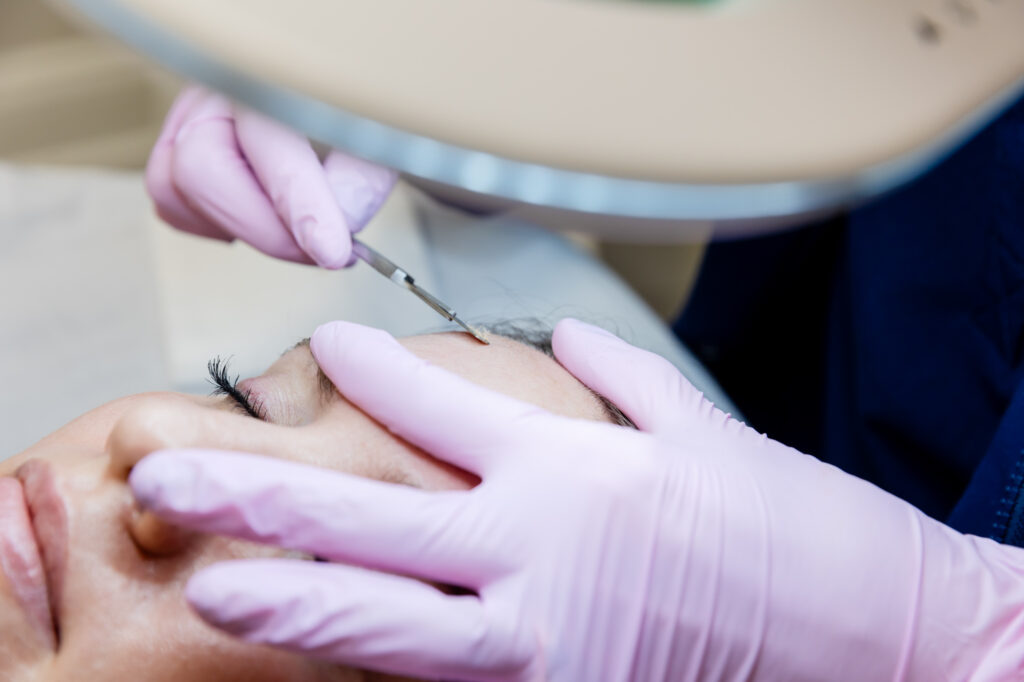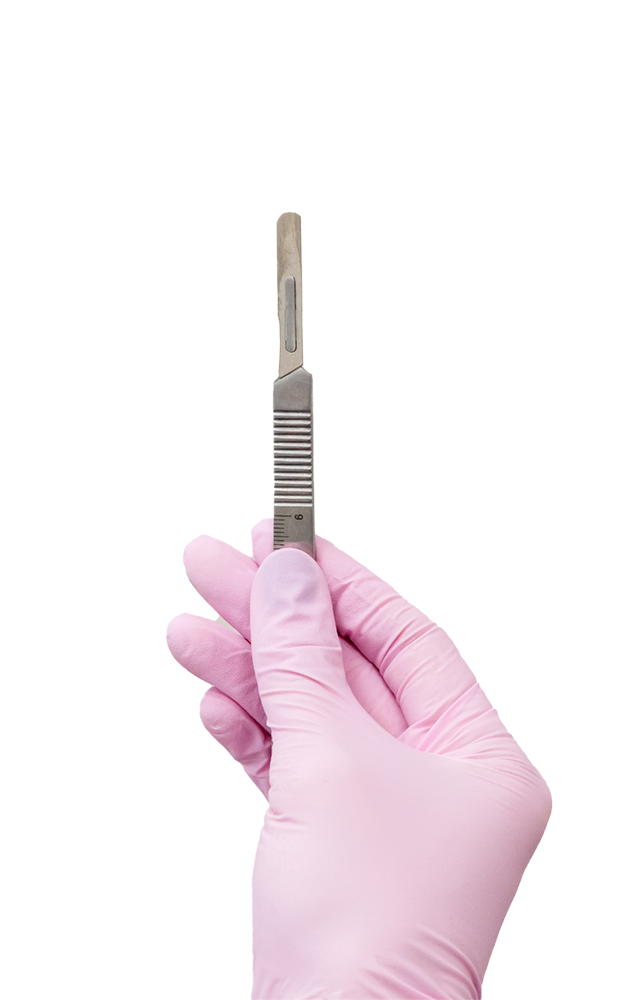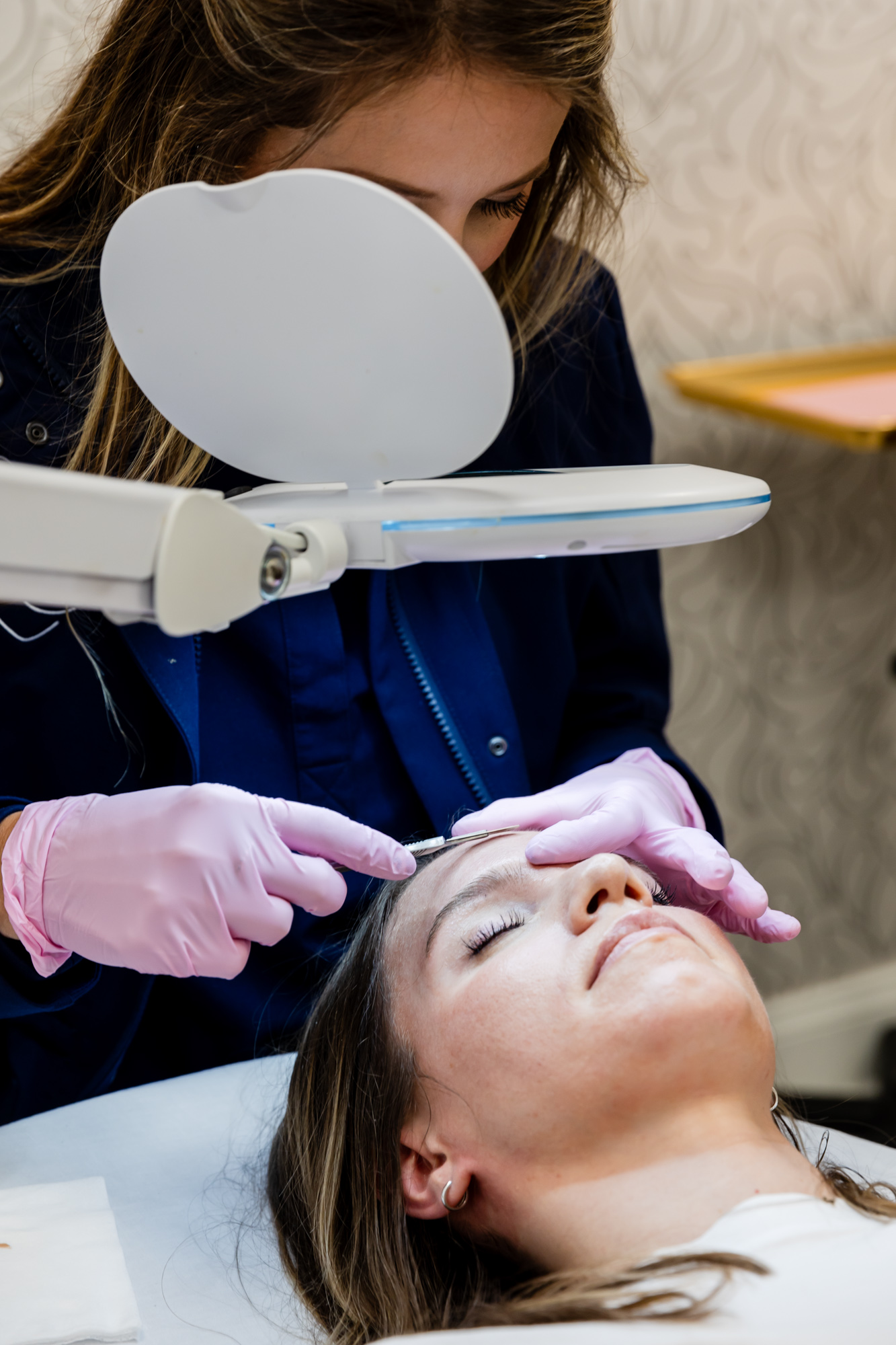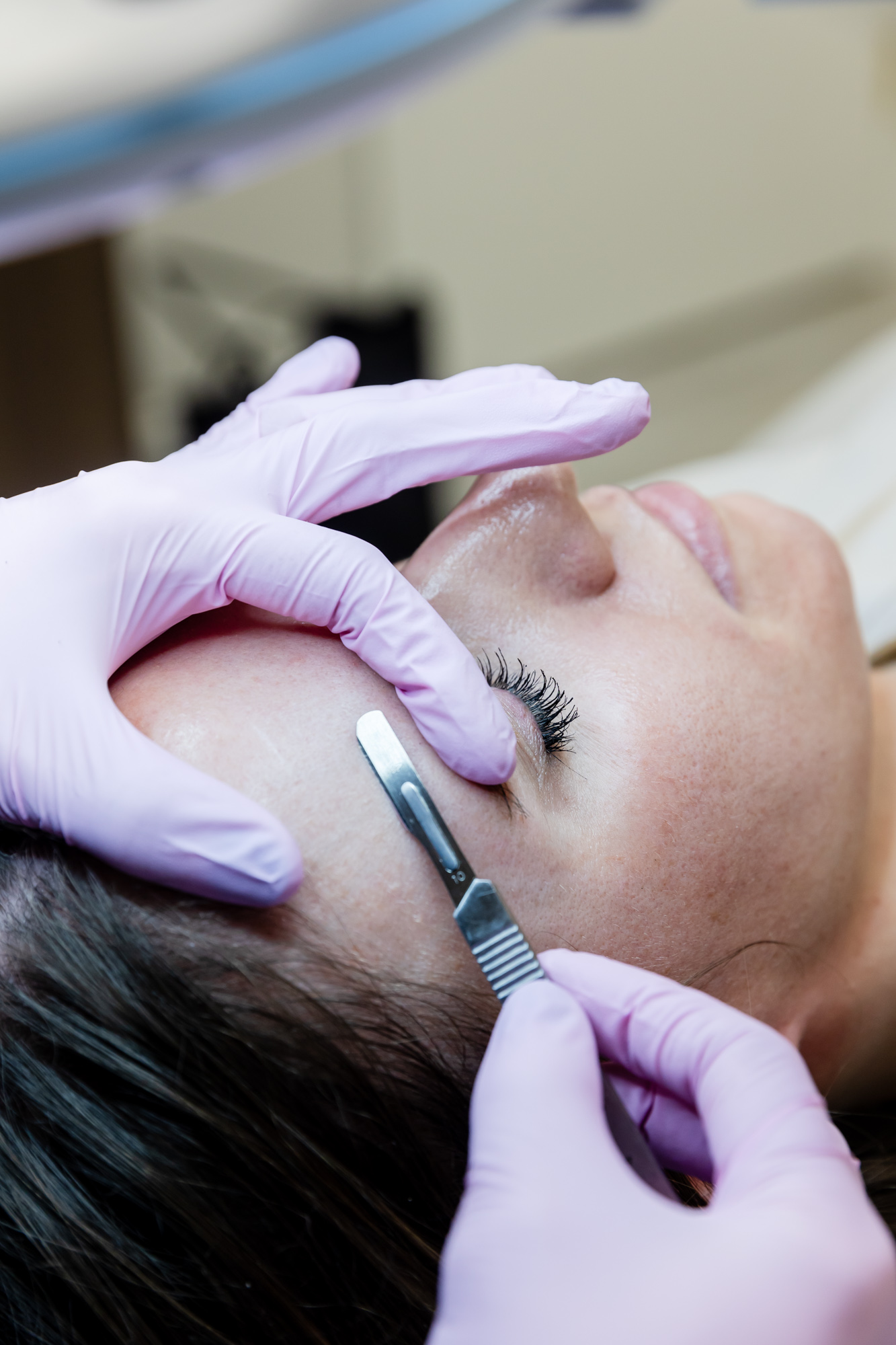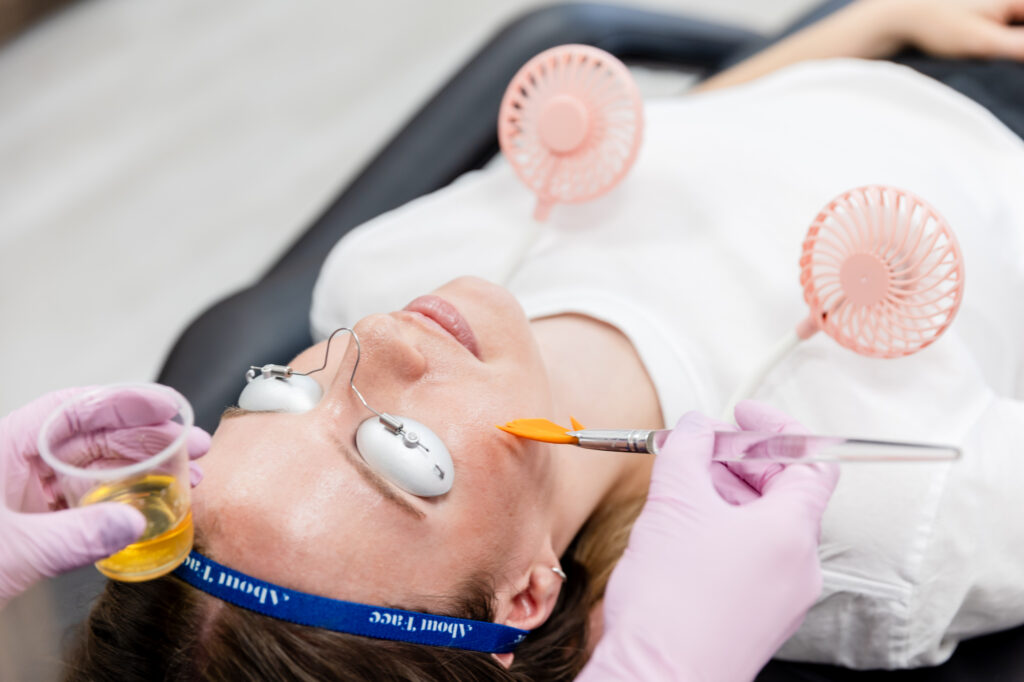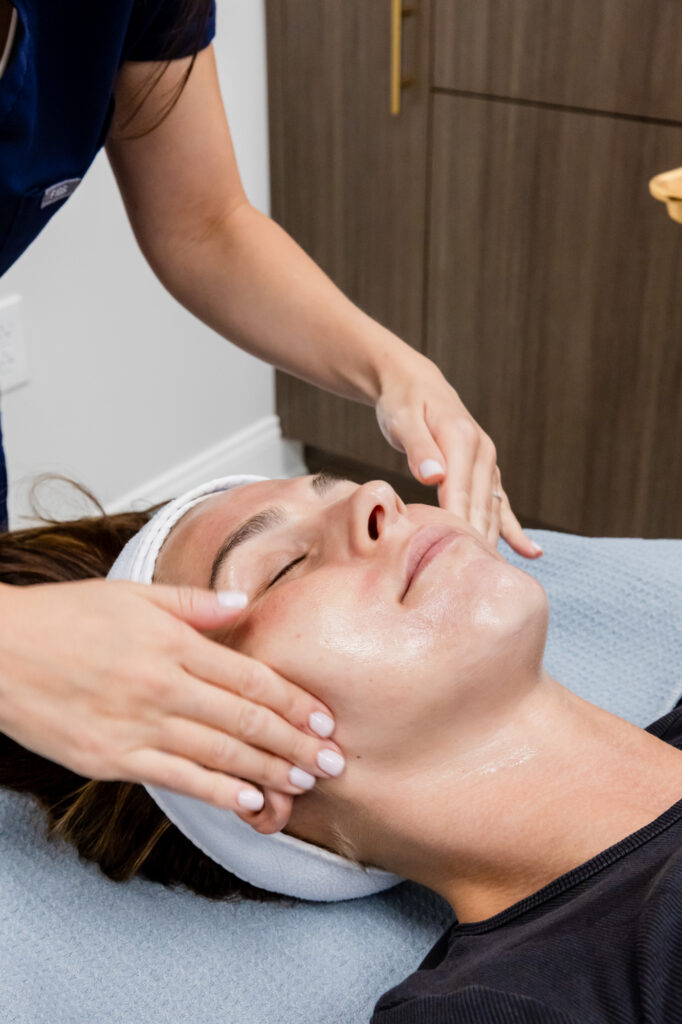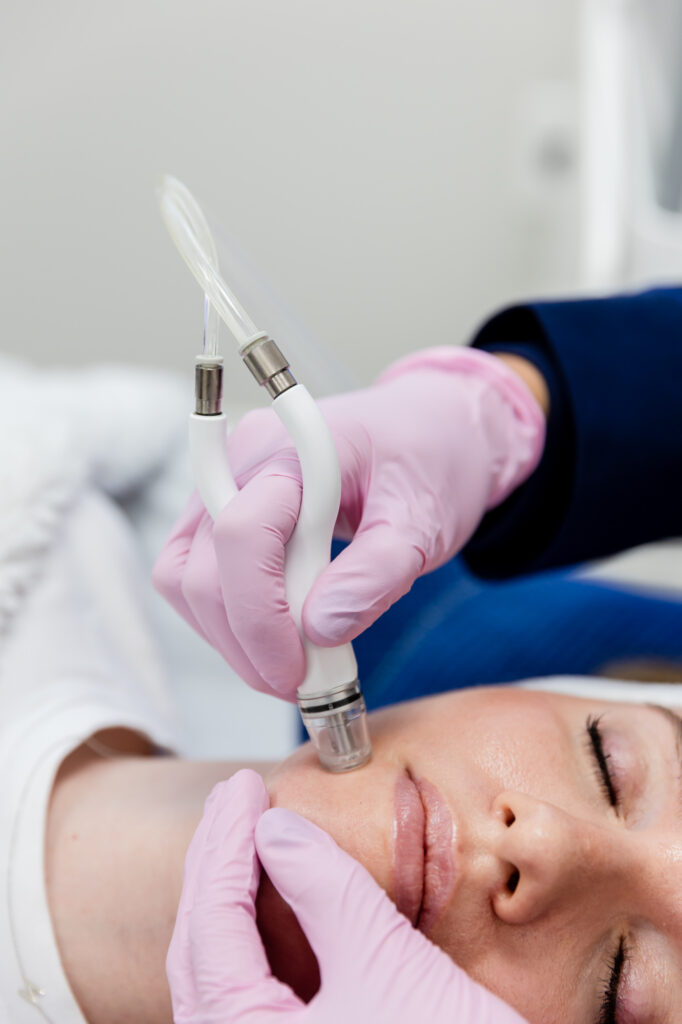As you might expect, dermaplaning feels like shaving. Have you ever used those little eyebrow shaping razors? It feels a lot like that! Your provider will use one hand to keep the treatment area taut to ensure the blade glides smoothly across your skin without catching.
No, shaving hairs does not cause them to grow back thicker or darker. This is true of all body hair! As hair grows back, it starts thick and tapers, which is why there’s the illusion of the hair growing back thicker. If you let the hair regrow to it’s previous length, you’ll see that it’s not at all thicker. Because the superficial vellus hair on your face is already so fine, you shouldn’t experience a “thicker” feeling in the weeks it grows back.
